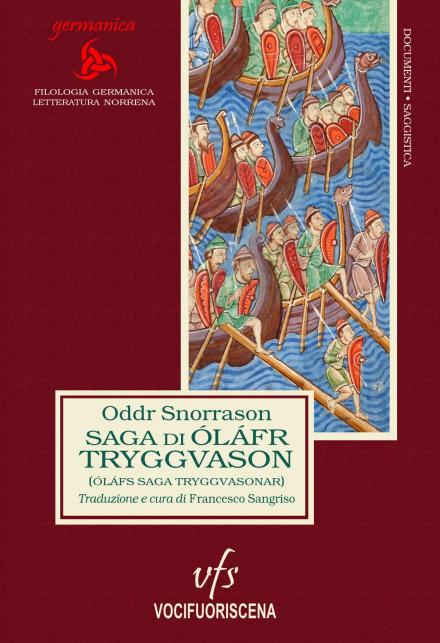Oddr Snorrason's Óláfs Saga Tryggvasonar defies any normal classification, and is indeed a real mystery. The original Latin version has been lost, and only two Old Norse translations have been preserved; even though these two versions differ from one to another, they share a common feature: the attempt of confirming the holiness of the king, whom is given the credit for introducing the Christian faith into Norway and Iceland. Óláfr Tryggvason combines both the qualities of the warrior and those of the missionary, thus creating an apparent transcendent oxymoron, that makes the great king the first ‘Christian Viking’ of Scandinavian history.
In addition to the celebrative aim, the saga contains important aspects related to the Pre-Christian universe, in which the magic and supernatural element plays a pivotal role: it is a prophetess that announces Óláfr’s birth, a female figure typical of heathen worship, and the announcement takes place at an extremely significant moment, the celebration of the winter solstice, following a custom established by tradition and during the ceremonial, before men begin the ritual libations. The Christian king turns twice to a Lapp, as such a master of magic and sorcery to obtain, thanks to the occult powers of which the Lapp is endowed, both the healing of his dog and news of his future fate. Also the narrations concerning Óláfr’s mysterious disappearance during the battle of Svölðr, in which he falls victim of the pagan faith’s leaders, stir up problems. It is a mystical apotheosis: the sovereign disappears from the context of historical events to land in the territory of myth. The Óláfs Saga Tryggvasonar, written by the monk Oddr (and by his translators), is a work with uncertain boundaries, whose hallmarks are precisely its tendency not to follow established patterns and its intrinsic contradictory nature, highlighted by the persistent semantic ambivalence of the most significant constituents, by the bizarre syntax, not rarely baroque, and by the lexical kaleidoscope that moves in a geometric Brownian motion into the medium of the text, among courtly anachronisms, Viking reminiscences, and biblical quotations.

